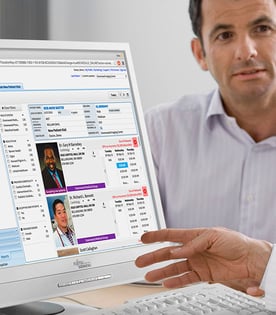
UPDATE: As of Jan. 1, 2024, the Appropriate Use Criteria program will not be implemented in any capacity. A notice on the CMS website currently (1/4/24) reads:
"As announced in the CY 2024 Physician Fee Schedule (PFS) Final Rule, effective January 1, 2024, CMS has paused efforts to implement the AUC program for reevaluation and rescinded the AUC regulations at 42 CFR 414.94. See pages 79256-79265 of the final rule.
Effective January 1, 2024, providers and suppliers should no longer include AUC consultation information on Medicare FFS claims. However, claims containing AUC related codes with dates of service in 2023 and 2024 will continue to process.
Additionally, CMS will no longer qualify PLEs or CDSMs and has removed this information from the AUC website. The claims processing instructions and guidance for the previous voluntary period and educational and operations testing period will be removed."
ORIGINAL ARTICLE:
A major goal of the AUC is to help providers order the most appropriate test for their patients by using a Clinical Decision Support Mechanism (CDSM). The Centers for Medicare & Medicaid Services (CMS) will use data collected from the program to identify outlier ordering professionals who will then be required to secure prior authorization.
Below are some of the most frequently asked questions from you, Cassling’s imaging partners. If you have questions regarding the AUC, please submit a comment below.
What is the Appropriate Use Criteria (AUC) program?
The purpose of the AUC program is to help providers order the most appropriate test for their patients by using a Clinical Decision Support Mechanism (CDSM). The Centers for Medicare & Medicaid Services (CMS) will use data collected from the program to identify outlier ordering professionals who will then be required to secure prior authorization.
If an order is made for Medicare Part B advanced diagnostic imaging services, appropriate use criteria (AUC) must be consulted through a qualified CDSM (qCDSM). This information must be provided to furnishing professionals and facilities as they must report AUC consultation information on their Medicare claims.
What is a Clinical Decision Support Mechanism (CDSM)?
A CDSM is an interactive, electronic tool for clinicians that gives the user AUC information that can be used to make the most patient-appropriate treatment decision for the specific clinical condition. A qualified CDSM (qCDSM) has been approved by the CMS.
What is the mandatory implementation date for AUC?
[Update: The AUC program will no longer be implemented. See above]
Medicare claims associated with the AUC will continue to be paid regardless of whether AUC requirements are met. CMS encourages stakeholders to use this period to learn, test and prepare for the AUC program.
If and when this suspension of the penalty phase is lifted, providers must use a qCDSM when ordering outpatient advanced imaging (CT, MRI, PET, nuclear medicine), and furnishing providers (radiologists and imaging programs) must document this consultation on both professional and technical claims for Medicare fee-for-service beneficiaries.
As an Independent Diagnostic Testing Facility (IDTF), if we receive an order from a referring provider that doesn’t indicate whether it’s been processed through a CDSM, are we required to do so?
The ordering clinician is responsible for providing AUC information to the IDTF (the furnishing professional). As an IDTF, you can use the MH modifier that indicates it’s unknown if the ordering professional consulted a CDSM as the information wasn’t provided. The MH modifier doesn’t require an accompanying G-Code, which lists what CDSM was used. A list of approved CDSMs and G-Codes can be found here.
Does the Medicare patient have to pay the bill if the clinician doesn’t enter the correct information?
They should not. The claim would be denied, and the provider wouldn’t receive payment, but the bill wouldn’t be transferred to the patient. There are exceptions, depending upon the service. But in general, it shouldn’t be the patient’s responsibility.
If a provider who sees patients at our critical access hospital (CAH), which is exempt from these regulations, orders an imaging exam at another facility that isn’t exempt, does that exam need to adhere to the AUC decision process?
Yes, providers who work in rural facilities would need to comply with the AUC mandate as ordering professionals for exams at outpatient or other applicable sites.
If I receive payments through CMS’s Hospital Outpatient Prospective Payment System (HOPPS), will I be impacted by the AUC program?
The AUC program has an impact on orders for advanced imaging orders in every setting other than inpatient. There are a few exemptions and hardships, but they apply only under strict circumstances. For example, if the patient is critical and being seen in the Emergency Room.
What happens if I don’t order a qualified CDSM (qCDSM) but still bill for the exam?
The AUC is straightforward. You may not bill for an exam without ordering a qCDSM. If you do so repeatedly, you’ll find yourself on the ‘Preauthorization Required’ list.
Who can make the call on whether an event is a true emergency that would qualify for an exemption or hardship?
Neither the rendering physician nor the reading radiologist can make that call. Only the ordering physician, who does that on the order form. There is no other way to attest to that exemption.
Are there any CDSMs that are integrated into any electronic health record (EHR) system, or are they stand-alone products?
There are many types of CDSMs. Some, but not all, integrate into EHR systems.







Comments